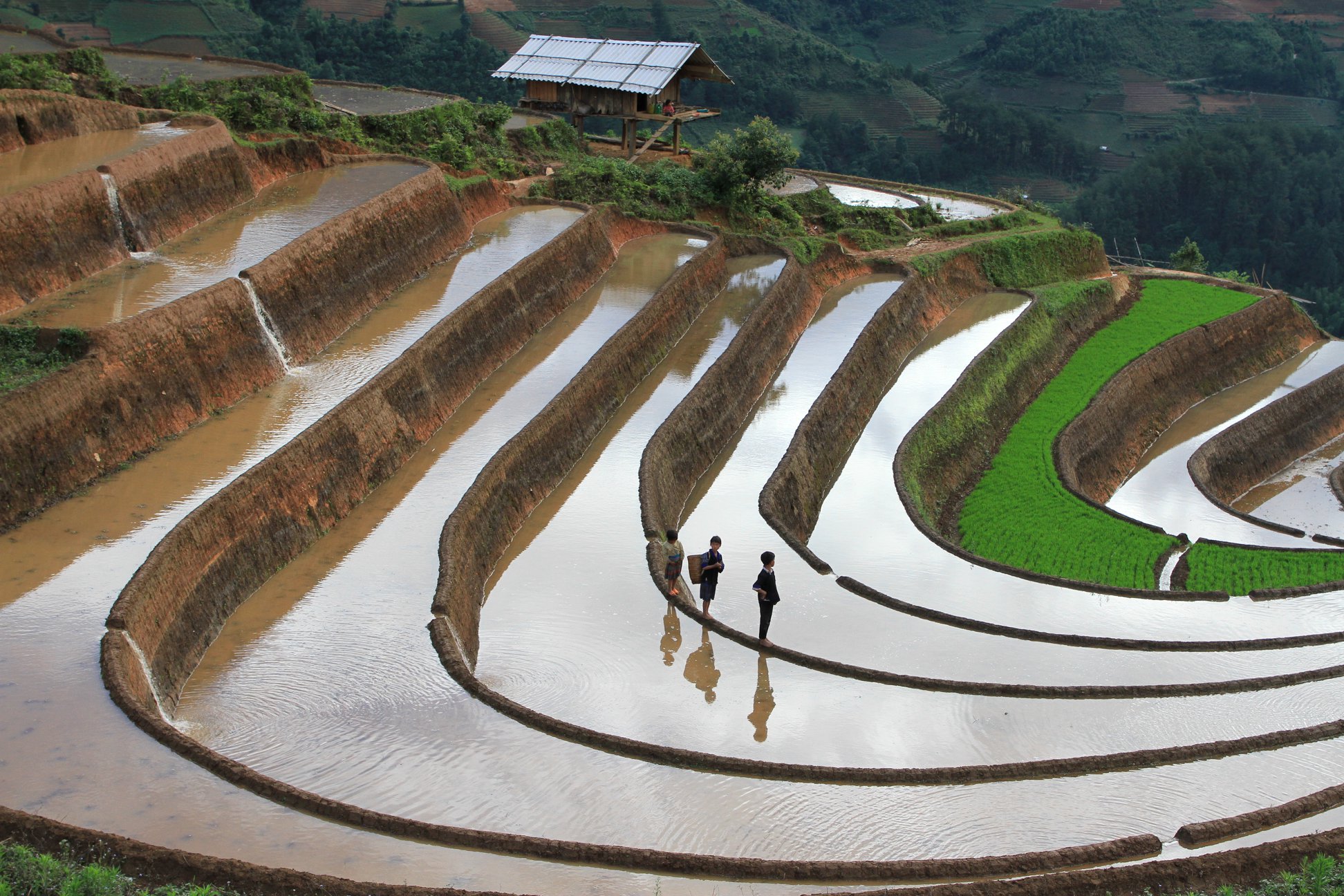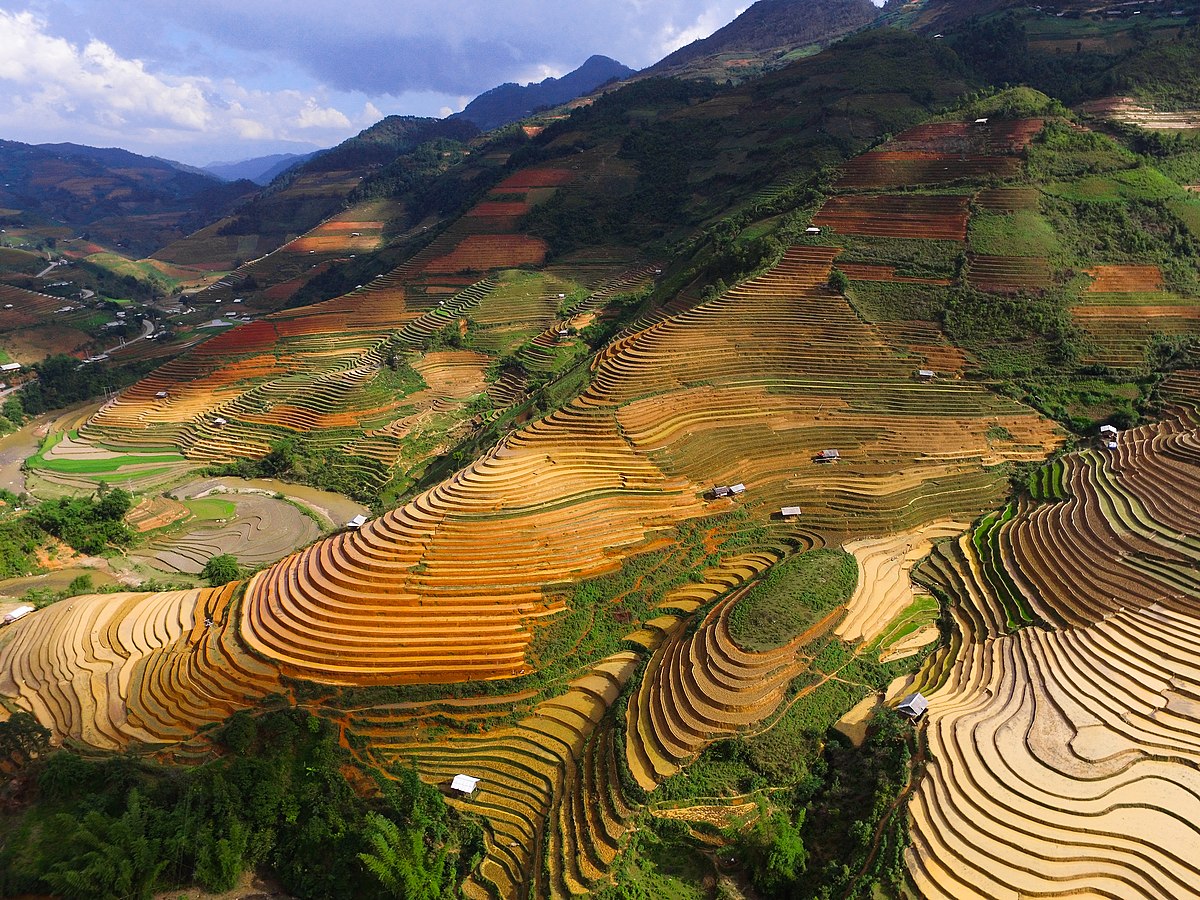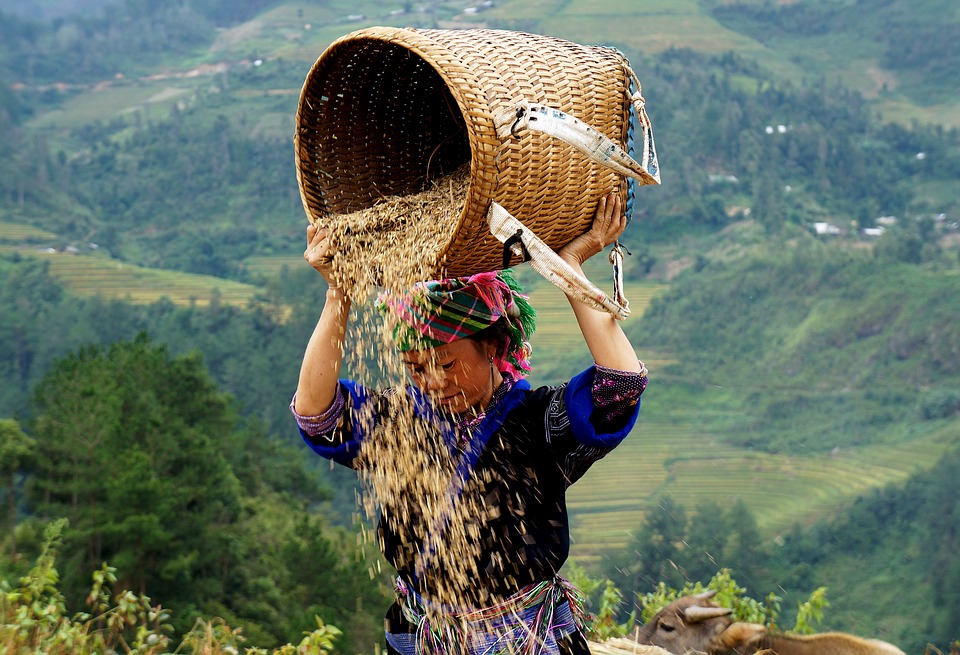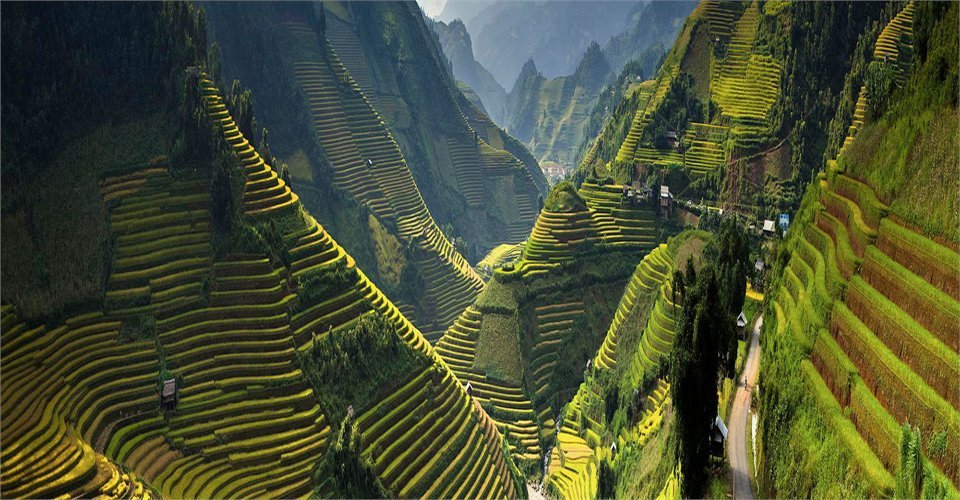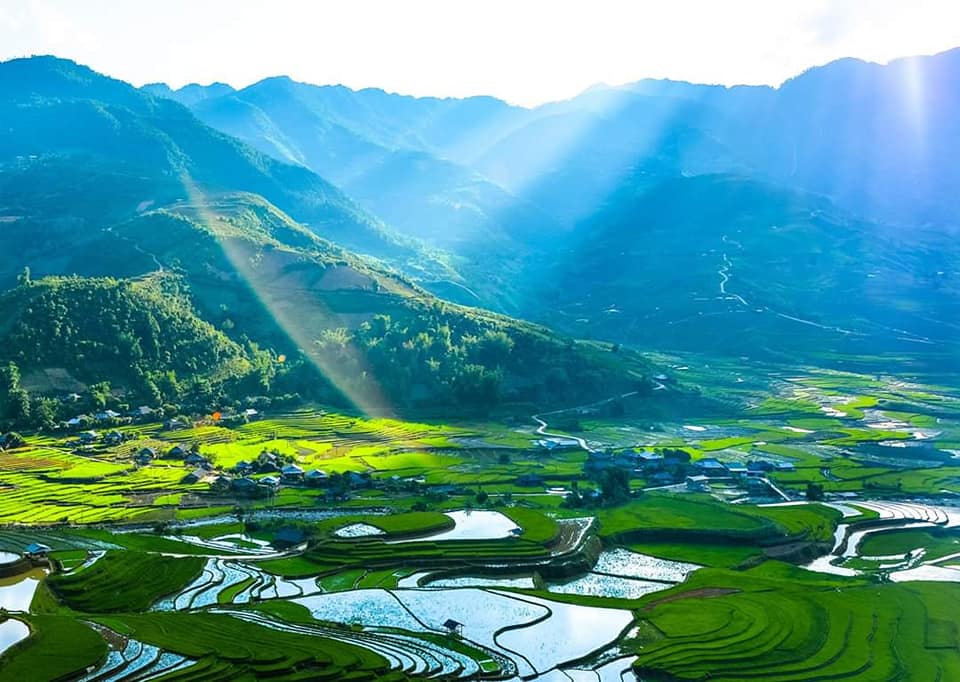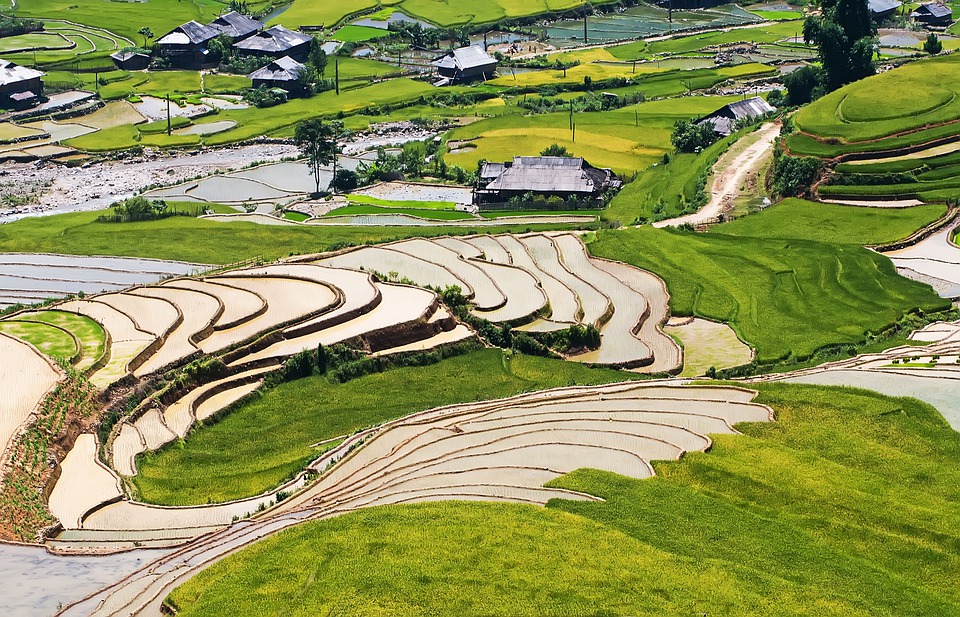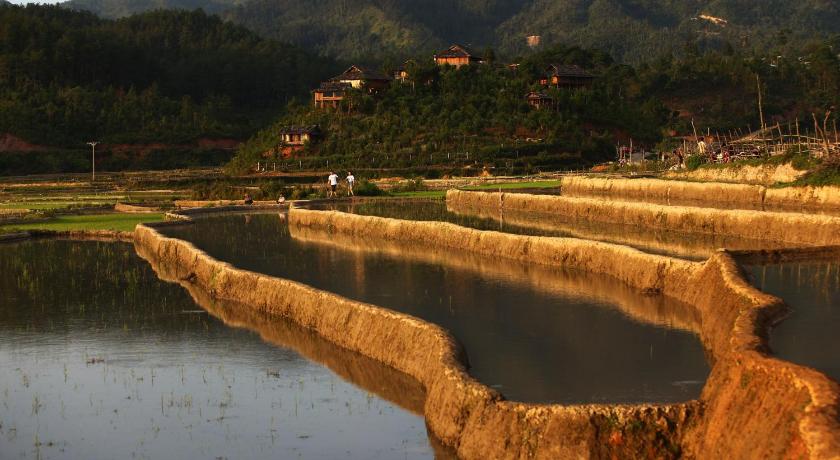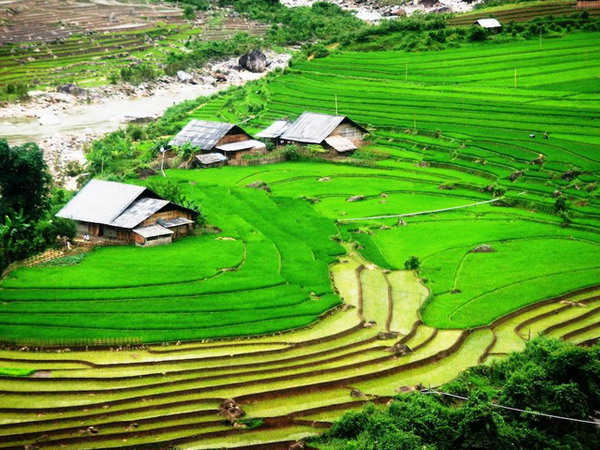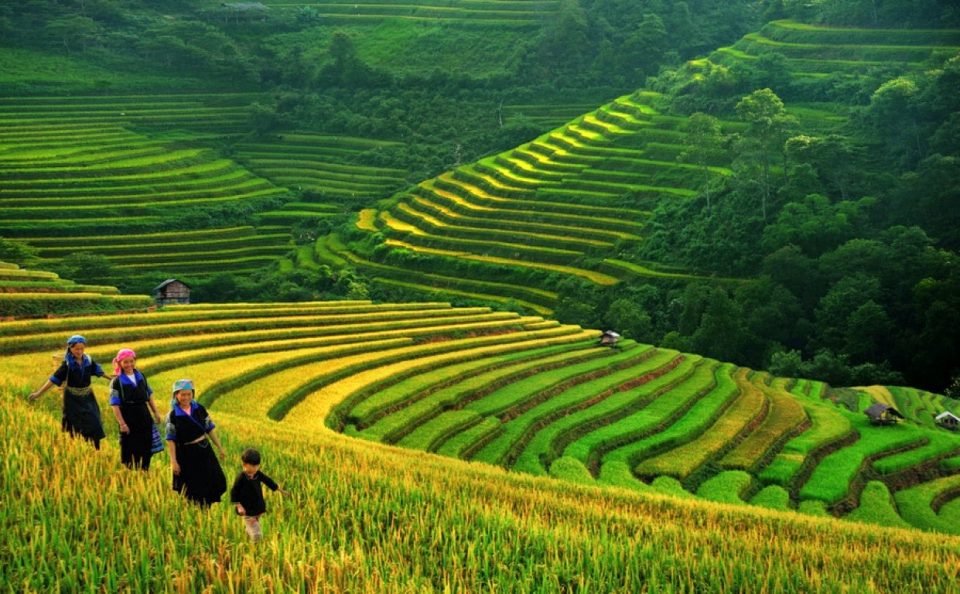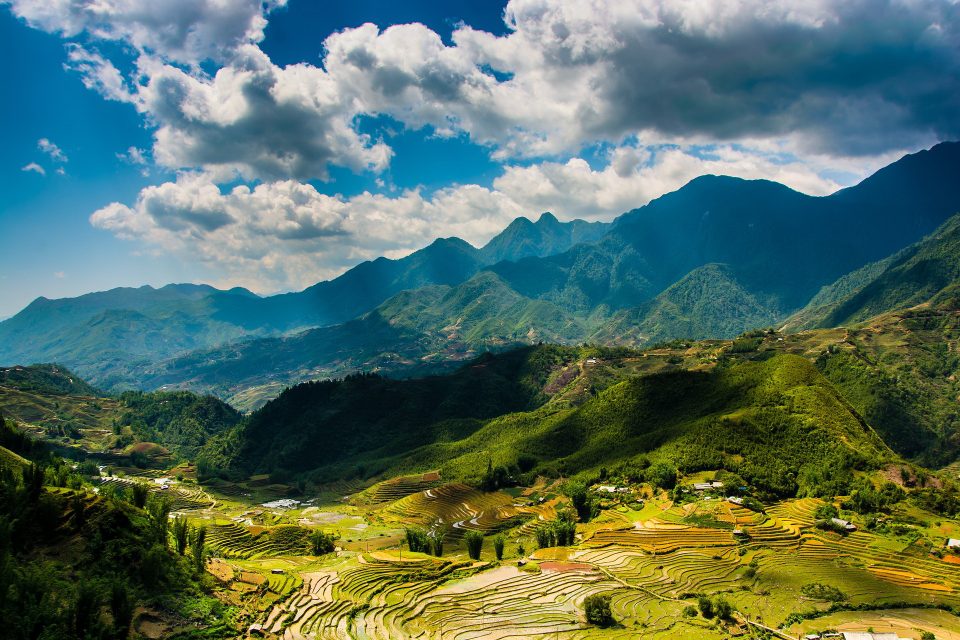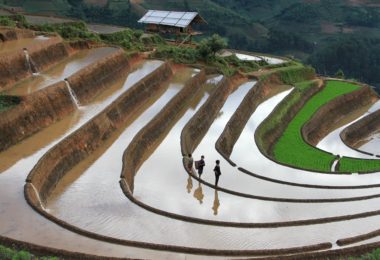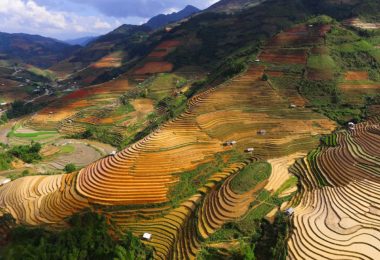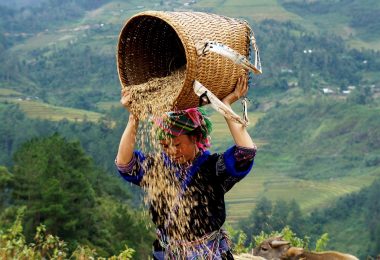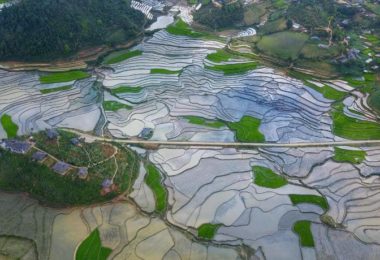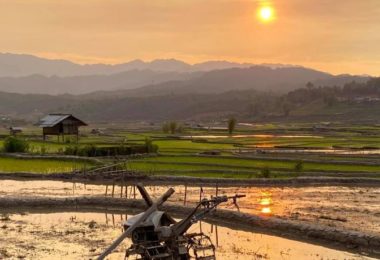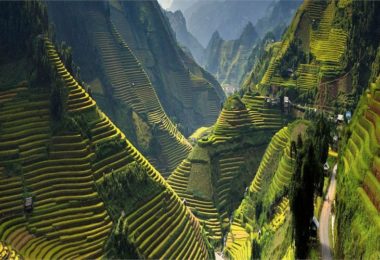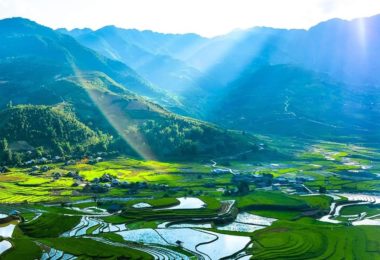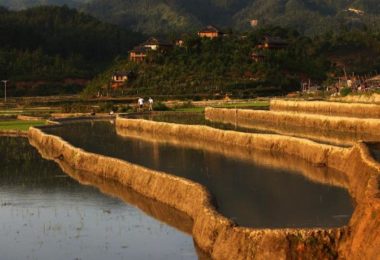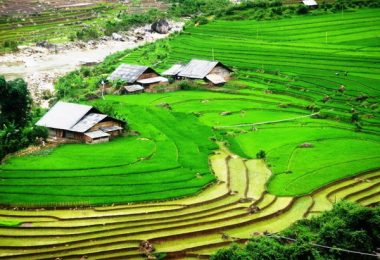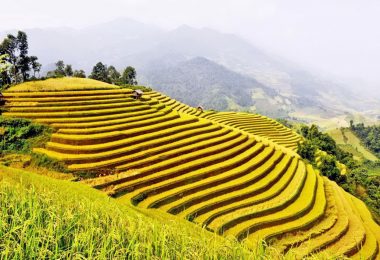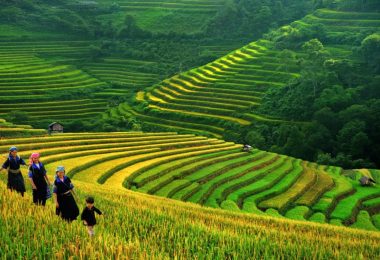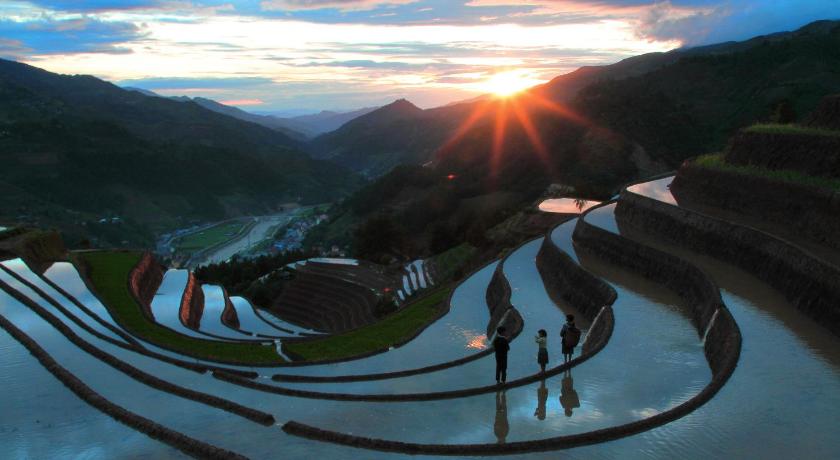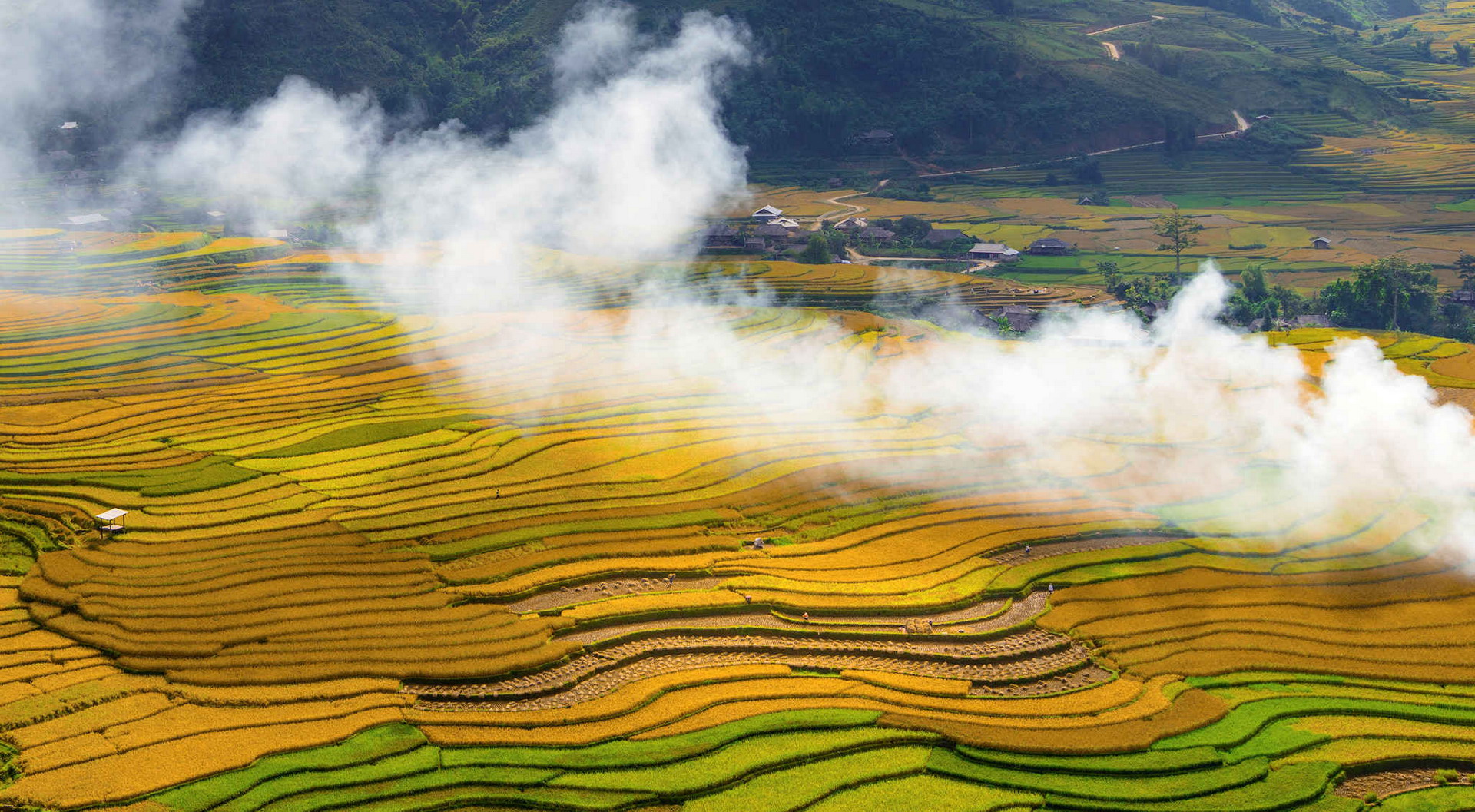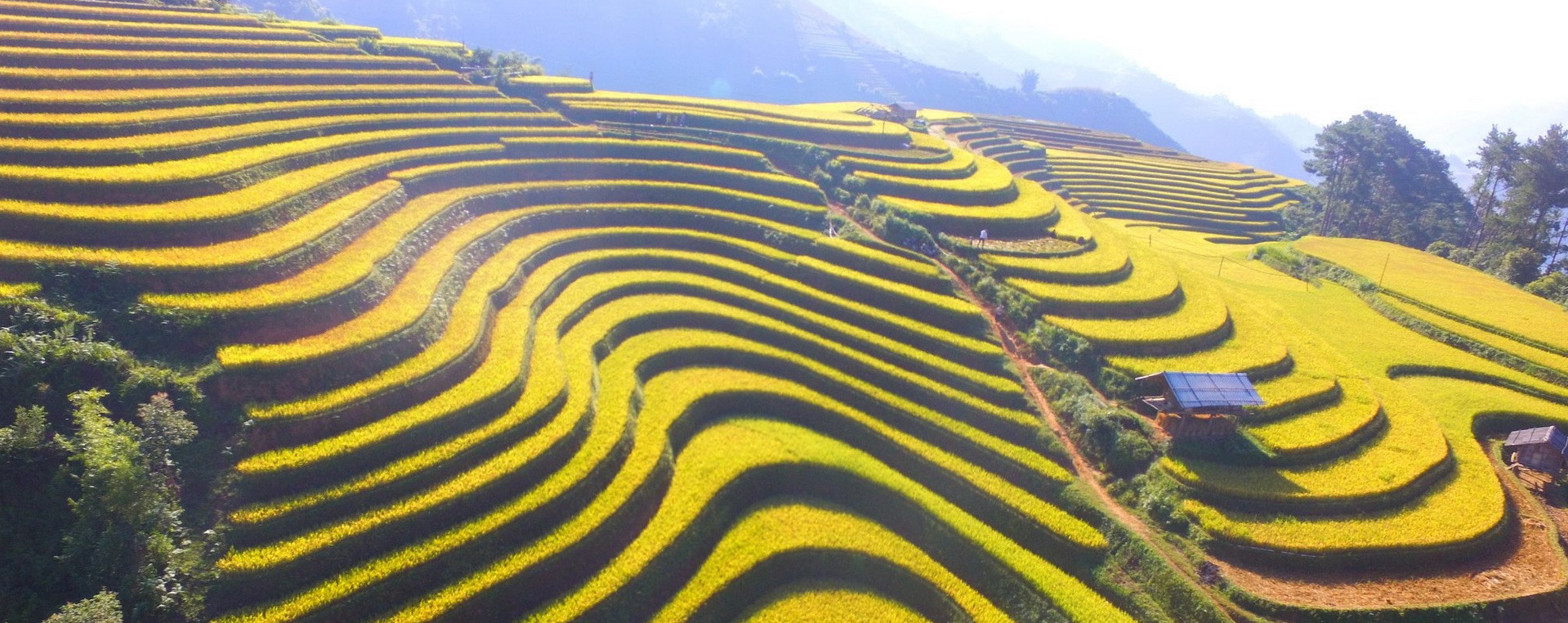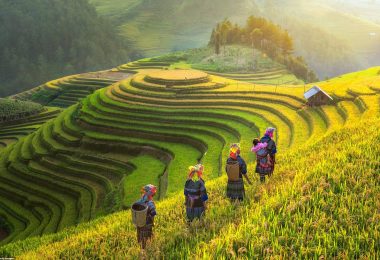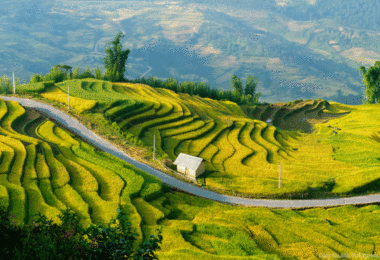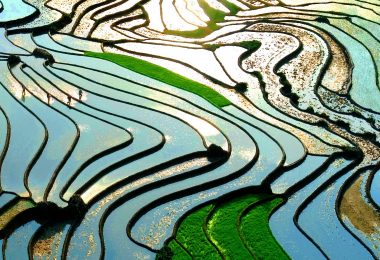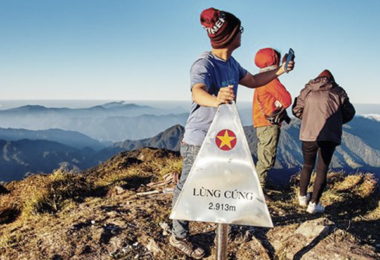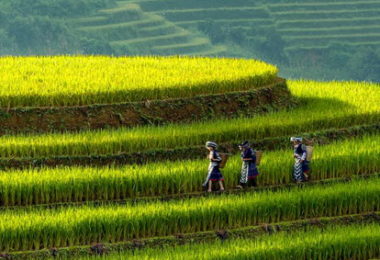Today, it is time to open the curtain for one of the most magnificent adventures—the journey to one of the most stunning destinations in Vietnam: Mu Cang Chai. Mu Cang Chai lies deep in the middle of the beautiful northwest region and has long been considered a hidden gem due to its breathtakingly beautiful fields of terraced rice and colorful ethnic cultures.
This is the best season for a hiking tour in Mu Cang Chai, the important criterion, with a full appreciation of beauty and rich culture. For those fond of hiking or loving nature, or simply needing some refreshing time away from the busy city life, considering visiting at the right seasons makes all the difference. So now, after going through the best season for a hiking tour in Mu Cang Chai, make sure to make it an unforgettable adventure!
Overview of Mu Cang Chai
Location and Accessibility from Hanoi
Getting to Mu Cang Chai is a travel on its own! This district is located approximately 300 kilometers northwest of Hanoi. From the overcrowded city, it takes around a 7-8-hour drive or motorbike ride to the serene landscapes of Mu Cang Chai District. The road is twisting in parts, but the views are simply fantastic. Imagine walking through emerald green valleys and crossing breathtaking mountain passes with gradual changes in view from the busy urban setting to serene rural settings. Bus services run from Hanoi to Mu Cang Chai for travelers who relish easy transport modes
Significance of Mu Cang Chai in Vietnamese Tourism
There is something about Mu Cang Chai that strikes a spot in locals and travelers from the world over. It is an experience of untapped beauty, raw and nascent, off the beaten track in Vietnam’s mountainous northern highlands. The terraced rice fields reflect the ingenuity and toil of the local ethnic Hmong people, eking out beautiful landscapes generation after generation.
It is home to over 2,200 hectares of terraced fields listed as a national heritage site and visually changing according to the four seasons. From young green rice plants in spring to golden colors at harvest time in autumn, each visit expresses a different panoramic view. Consequently, Mu Cang Chai is a must-visit for photographers and hikers, and for people who can acknowledge the artistry of nature.
Unique Features: Terraced Rice Fields and Ethnic Cultures
Mu Cang Chai has a reputation locally for its breathtakingly iconic terraced rice fields and rich ethnic cultures. These terraces resemble giant steps up into Heaven, an agricultural work tapping into that of an untamed artistic profundity in itself. Immediately after the watering stage, usually in May and June, the sky mirrors would appear just like when viewing in a mirror—the unreal landscape of another life. Come September and October, these terraces turn into tiers of golden waves as the rice matures to provide one of the most beautiful sights in Vietnam.
Then there is the landscape beauty, that of Mu Cang Chai, home to many ethnic minority groups, mainly H’mong people. Their dynamic culture, authentic handicrafts, and peculiar traditional lives bring color and a halt to almost any visit. You will have a chance to witness complicated weaving processes, taste their food, and join local festivals. This cultural immersion makes your Mu Cang Chai hiking tour not only a feast for the eyes but also an experience that enhances the enrichment of your soul.
Climate and Weather in Mu Cang Chai
I am only more than willing to be your over-eager tour guide through the climatic wonders of Mu Cang Chai. Therefore, knowing the weather here is very essential in planning the best season for a hiking tour in Mu Cang Chai.
General Climate Description
The climate of Mu Cang Chai is temperate, much like Vietnam in general in the northwest. It is fresh and cool all the time at high altitudes in mountainous areas—a godsend from the baking heat in the lowland area. The temperature yearly ranges between 15°C and 22°C, an ideal factor for outdoor activity such as hiking.
Seasonal Weather Patterns
Spring (March-May): The spring season depicts mild temperatures and flowering in Mu Cang Chai. Days are warm with a temperature range of 18°C to 25°C, and light occasional showers enrich the green vegetation, offering a very ideal backdrop for one’s treks.
Summer (June – August): From June to August, temperatures range from 22°C to 28°C, with a high temperature of 72°F and a low reaching near 82°F. It gets hot during this time of the year, but Mu Cang Chai is farther up in elevation, so it is not as hot as some other places. However, the rains come quite frequently in this season, which makes the trails restless and green but slippery at times.
Autumn (September – October): Probably the best season for a hiking tour in Mu Cang Chai, famous golden rice terraces. Temperatures drop to 15°C–25°C with clear skies and dry conditions, which are perfect to walk around for hours and take pictures.
Winter (November – February): Winter is really cold in Mu Cang Chai, and the temperature usually drops to 10°C – 15°C. The air is fresh, pure, and very cold, but the tranquility of the scenes on the frosty landscapes offers unique beauty to this time of year
Best Weather Conditions for Hiking
Knowing the best season for a hiking tour in Mu Cang Chai involves awareness of the following:
- Spring: Perfect for those who love lush greenery and flowers.
- Autumn: This is the best time for seeing golden rice terraces, related to cool dry weather.
- Winter: A state of peace and tranquility that offers breathtaking, icy landscapes
The Best Seasons for Hiking tours in Mu Cang Chai
This promises to be a rather exciting journey as we explore the best seasons for hiking tours in Mu Cang Chai Each season depicts an absolute beauty, different experiences, and scenes. Let’s dive into the details!
Spring (March-May)
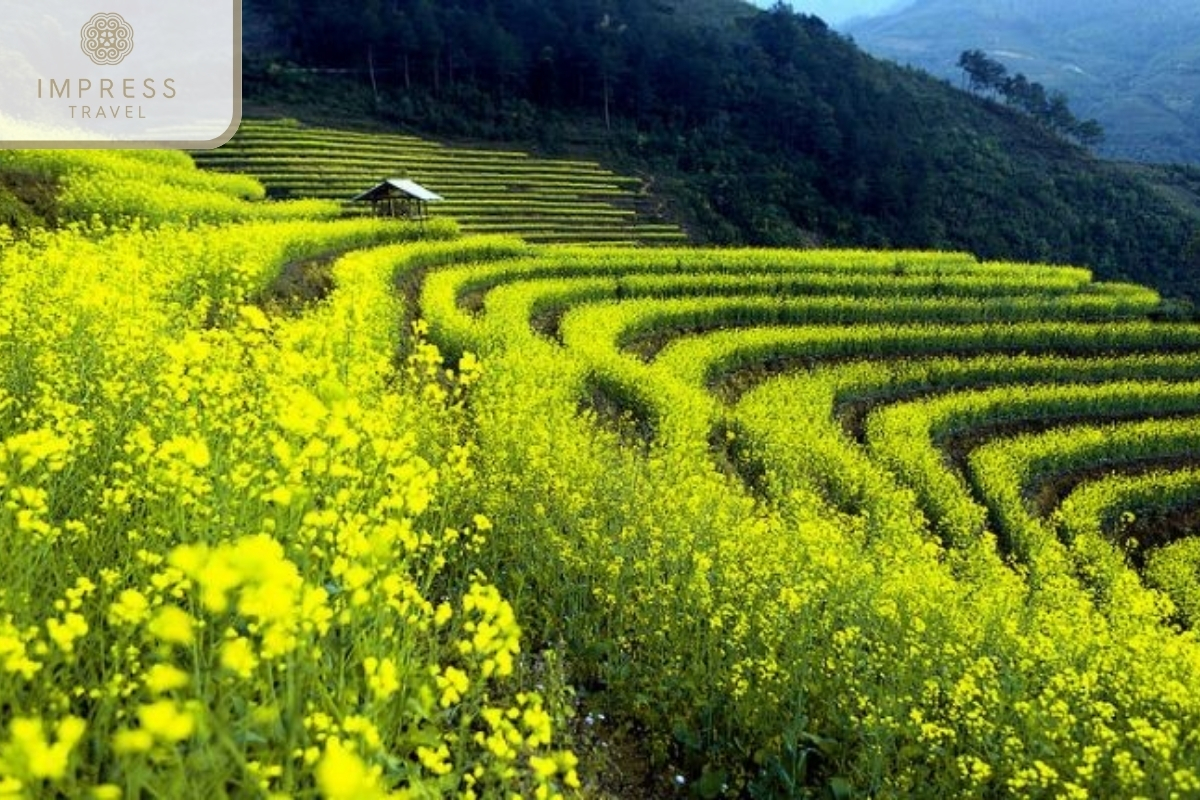
Spring
Description of Spring Weather
Spring in Mu Cang Chai is the season of renovation and beauty. The temperature is from 18°C to 25°C with mild weather, while the air is fresh and scented by blooming flowers, which is truly perfect for outdoor activities
Natural Beauty and Activities
In spring, Mu Cang Chai bursts into a colorful heaven. The terracing rice fields awake for new growth, then dye the landscape into shades of green. This season, the locals enjoy themselves with many joyful activities to open a new agricultural cycle. This is considered the perfect time for immersing oneself in the local culture and enjoying nature.
Pros and Cons of Hiking
Pros:
- Gentle and pleasant weather, great for long hikes.
- Lush green landscapes with flowers in bloom.
- Fewer tourists; thus, more serene.
Cons:
- Light rains occasionally wet the paths, causing them to become slippery.
- This time of year, the fields don’t hold the same photogenic qualities as they do during harvest
Summer (June – August)

Summer
Summer Climate and Potential Challenges
Summers in Mu Cang Chai are hot and gusty, with temperatures of approximately 22°C to 28°C, equivalent to 72°F to 82°F. This would equal a much cooler measurement compared to staying at low land areas; however, frequent rain showers and heavy pouring are common thing, making it an adventurous twist added to your hiking experience
Highlights of Summer Landscapes
Summer, although rainy, offers calm, green landscapes. The rice fields grow to the fullest and appear as a green tapestry-like carpet on hills. This also happens to be a time when waterfalls are at their best due to the rains.
Pros and Cons of Hiking
Pros:
- Landscapes lush green, exquisitely beautiful.
- Temperatures are cooler than in the lowlands.
- Magnificent cascading waterfalls and colorful nature.
Cons:
- regs; frequent showers often drench trails, and managing them is tough.
- Higher humidity can make hiking less comfortable.
Autumn (September – October)

Autumn
Autumn Weather Overview
Autumn is often hailed as the best season for hiking tours in Mu Cang Chai. Temperatures range from 15°C to 25°C with very dry and clean weather, which is useful when hiking.
Famous for Golden Rice Terraces
This season is the proud owner of the magnificent golden rice terraces. When ripe, the rice fields begin to turn golden in color, making them one of the most iconic and breathtaking landscapes of Vietnam. It is any photographer’s dream and a picture feast for the eyes of every visitor.
Pros and Cons of Hiking
Pros:
- That is the ideal weather—cool, dry, and clear skies.
- Marvelous golden rice terraces with stunning views are great for photo opportunities.
- Ideal for experiencing culture and festivals
Cons:
- Can feel crowded by tourists sometimes, especially during peak season
Winter (November – February)
Winter Climate and Conditions
Winters in Mu Cang Chai are cold, with the temperature dropping as low as 10°C – 15°C. It is the crispest and most refreshing time of the year. Although it may be very cold, frosty landscapes give a different serene beauty
Unique Winter Activities
Winter is the season when hiking gets serene and peaceful. Frost-dusted landscapes are quiet and calm. This serves as a good opportunity to enjoy the trail at one’s own pace with clear, crowd-less tourist trails and immersed in its beauty that only winter can offer
Pros and Cons of Hiking
Pros:
- Tranquil, without noise, trails, less treaded or illuminated by tourists.
- Unique frosty landscapes and clean, fresh air.
- Ideal for anyone who loves the cold and snowy ambiance.
Cons:
- Not all hikers are comfortable in the cold.
- How long one hike can be cut short by limited daylight hours?
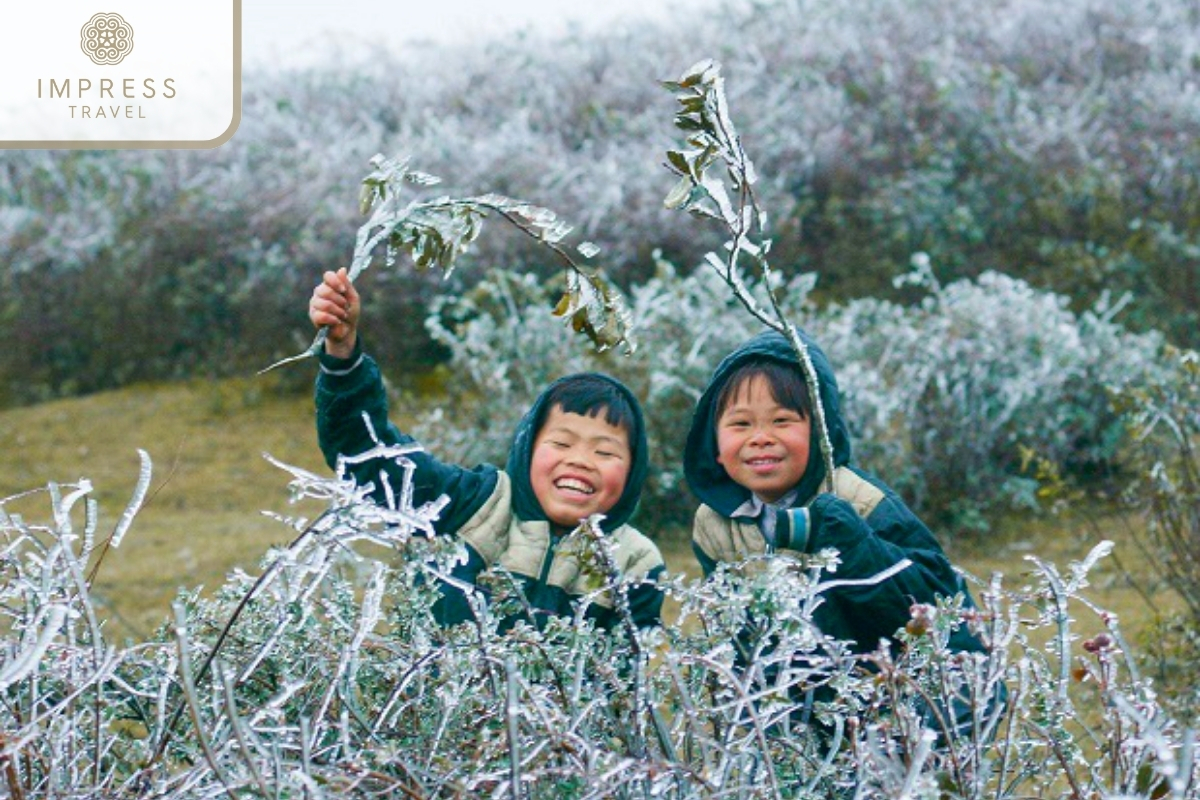
Winter
Hiking Trails
Ready to explore Mu Cang Chai‘s best hiking trails? Let us go and have an overview of all the mesmerizing routes and destinations that make this place a dream for every hiker. Ranging from breathtaking mountain passes to serene villages, we have everything at our fingertips.
Khau Pha Pass
First, the magnificent Khau Pha Pass is one of the highest mountain passes in Vietnam. With more than 1,200 meters above sea level, its scenery looks out upon compelling views of rice fields below, terraced into hillsides. The name “Khau Pha" literally means “Sky Horn," which opens the heights one will face on this trail.
Hiking in this area will be a challenging time because the route meanders from rugged terrains to verdant forests and civilizations. The ways were fascinating in their own right, demanding, and rewarded every step with panoramic vistas. You must pass through ethnic minority villages where you would experience the customs and traditions of the Hmong and Thai people.
Best Time to Visit
The best season for a hiking tour in Mu Cang Chai along Khau Pha Pass would be in autumn, September to October, when the rice terraces are golden best, forming a strikingly bold contrast against green hills and blue skies.
La Pan Tan
Next, let’s go to La Pan Tan, a commune surnamed by its large-scale terraced fields. Being listed as one of the most beautiful places in Mu Cang Chai, it is undeniable that La Pan Tan will be an absolute destination for all those seeking to capture the soul of rural Vietnam
Recommended Hiking Routes
There are several routes to choose from while hiking in La Pan Tan, each presenting the natural and cultural splendors of the region. One of the popular trails starts right at the heart of the commune and takes one through the terraced fields, with views at almost every turn that take one’s breath away. Another route takes one to the top view of hills, providing a bird’s-eye view of the entire landscape.
The best season for a hiking tour in Mu Cang Chai has to be autumn, with its golden terraces creating a held carpet. On the other hand, spring offers capturing lush green views and is another excellent time for hiking.
Mam Xoi Hill (Tray Hill)
Now, we move on to the famous Mam Xoi Hill—the Tray Hill. This hill is rather famous for its unique round terraced fields in the shape of a giant tray or “mam you" in Vietnamese. It is one of the most photographed places in Mu Cang Chai and a feature of the agricultural ingenuity districts.
Best Hiking Experiences
Hiking to Mam Xoi Hill would be of a relatively medium grade; most people could do it without any problem. The path winds its way around terraced fields and small villages, allowing plenty of opportunities for interaction with the locals and observing their farming practices. Just simply unparalleled is the view from the top, as these circular terraces transform into an amazing feast of visuals.
For the best season for a hiking tour in Mu Cang Cha, autumn and spring are both perfect visions with golden hues of terraces in autumn and green in spring
Other Notable Trails
Xa Phin Village
Hike to the culturally oriented Xa Phin Village. This village is inhabited by the Hmong people, and one gets a taste of traditional ways of life passed from generation to generation. A gentle, scenic hike through fields and forests leads up to this village.
Suoi Giang Hot Springs
Finally, to relax after your hike, drop by the Suoi Giang Hot Springs. Located in the Commune of Suoi Giang, they are a series of totally natural hot springs that are perfect for soaking tired muscles at the end of a strenuous hike. The surrounding area is beautiful with its greenery and tranquil streams
Practical Tips for the best season for a hiking tour in Mu Cang Chai
First, let’s get you fully prepared for your Mu Cang Chai hiking adventure. Here are a few practical tips for you so that you can make sure to be able to keep safe and enjoy the trip.
Necessary Gear and Equipment
- Sturdy Hiking Boots: The nature of challenging, rugged terrains requires them.
- Weather-Appropriate Clothing: It’s about layering, as temperatures will vary
- Backpack: A comfortable backpack for carrying water, light refreshments, and any other needs.
- Rain Gear: This is more so during the summer rainy months.
- Sun Protection: hats, sunglasses, and sunscreen.
Health and Safety Precautions
- Stay Hydrated: Drink a lot of water, especially on long hikes.
- First Aid Kit: Always carry some type of first-aid kit along.
- Local Guide: Hiring a local guide adds an advantage to ensuring greater enjoyment and safety.
- Respect the Altitude: Take it slow to avoid altitude sickness along higher trails such as Khau Pha Pass.
Accommodation Options
More than one kind of accommodation is available in Mu Cang Chai, from rustic homestays to basic comfortable guesthouses. Staying at a local family’s homestay would prove more culturally immersive. Of course, you should book in advance during peak seasons.
Local Customs and Etiquette
- Respect Local Traditions: Always ask for permission to take pictures of people.
- Dress Modestly: Especially in villages and at religious sites.
- Greetings: A simple nod or a smile is worth much in respect.
Conclusion
Okay, adventurous souls, let’s wrap up our journey through the best seasons for hiking in Mu Cang Chai: each season unfurls distinct beauty—from emerald landscapes and lively green rice fields during spring and summer to the majestic golden terraces of autumn and peaceful frosty trails of winter. Whether one is a professional wanderer or a nature enthusiast, Mu Cang Chai is bound to provide you with a journey that will etch bright and great visions forever in your heart. And then, there is Mu Cang Chai, for which beauty knows no bounds and has its fascinations waiting to amuse first-time visitors with new wonders for repetitive visitors. Thus, pack your hiking boots and never forget to bring your camera as you’ll be well on your way to discovery in this fairytale land of Vietnam. Plan, be prepared for safe yards, respect the local culture, pack smart, and leave no trace. For further information, please visit IMPRESS TRAVEL Mu Cang Chai Tours. We will try harder to make more beautiful memories with you!


































